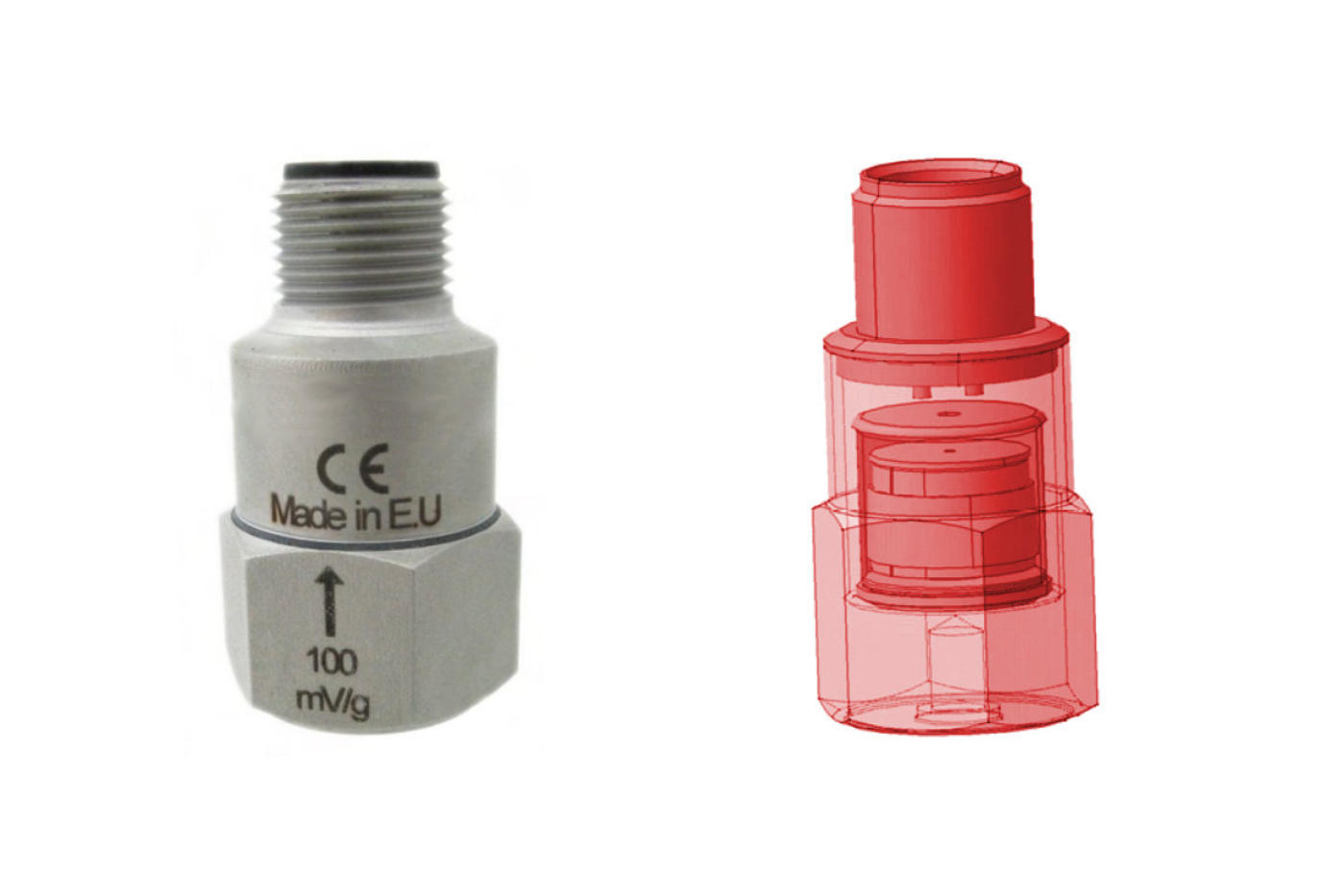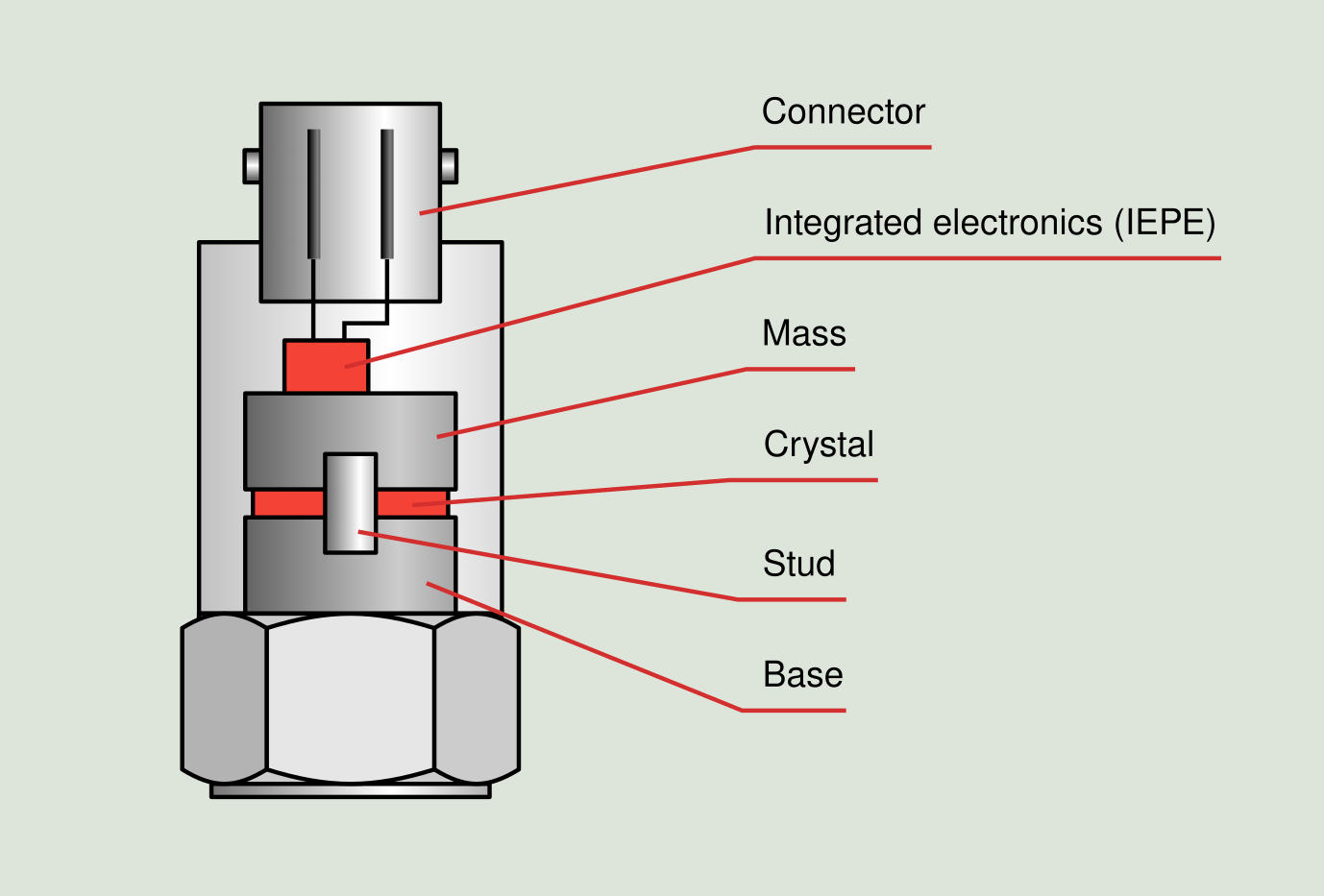This type of transducer generates an electric voltage that is proportional to acceleration, due to the pressure applied on a piezoelectric crystal. A piezoelectric accelerometer can accurately measure signals between 1 Hz and 15,000 Hz. These devices are well suited for taking high-frequency vibration data, where large forces with relatively small displacements have to be detected. Some special transducers can measure much lower frequencies and also much higher frequencies. The collection of vibration data at high frequencies is conditioned by the attaching method of the transducer to the machine.


A piezoelectric velometer is constructed just like an accelerometer, but with a signal amplifier that performs an integration of the signal. Since this stage of integration is done inside the velometer, the signal output is given directly in velocity units. The velometer takes advantage of the good frequency response characteristics of an accelerometer, so that it generates a linear output over a much larger frequency range than the seismic velocity transducer.
Advantages of the piezoelectric transducer:
- Most sensors have a wide frequency range, usually between 2 Hz and 15,000 Hz. It should be noted that the frequency response is conditioned by the sensor mounting method in the machine.
- These transducers are very compact, without moving parts, light and small, needing small magnetic bases for temporary mounting.
- An external signal conditioner is not required for the ICP (Integrated Circuit Piezoelectric) transducer type. Although ICP is a registered trademark of PCB Piezotronics Inc., it has become a generic term for an accelerometer with integrated amplifier. They are also often referred to more precisely as voltage mode accelerometers.
- Can be easily mounted with adhesive or screwed. Magnetic bases may also be available for temporary mounting or special applications.
Disadvantages of the piezoelectric transducer:
- When used in "hand-held" or "stinger" mode to measure high frequencies, the signal response is very poor above 1200 Hz.
- Accelerometers need an external power supply.
- The amplitude output can be given in acceleration units. This output must be integrated to obtain the spectral representation or the overall velocity amplitude value.
